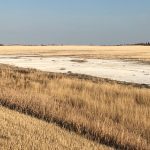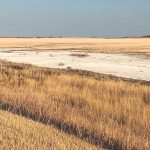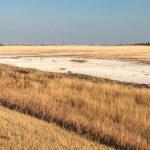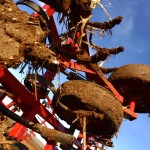Crop Aid SS is a Saskatchewan-made spray for managing soil salinity, designed to help leach salts from the root zone.


New product, Crop Aid, focuses on water flow through the soil, offering an alternative to gypsum and organic ammendments

Soil health speakers urge farmers to avoid bare ground, test with soil health in mind

Salinity can only be managed, not fixed, so every acre is not a soybean acre

The same hydrology that made drought a salinity issue also causes problems the other way

Manitoba’s dry conditions have done little to beat back salinity in areas prone to the issue

Salinity exists in Manitoba, but producers might not be aware of it until it's too late

Research on saline soils underway, but at least one cause points to over-tilling